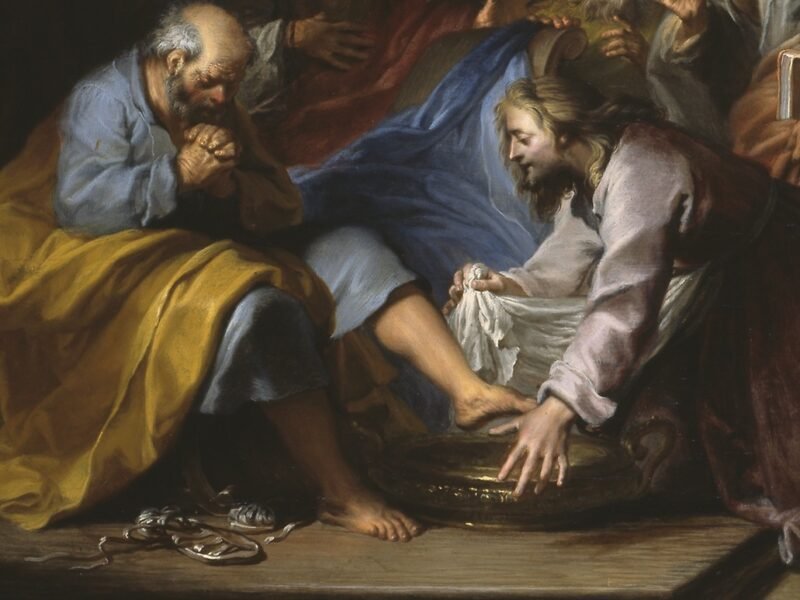Every so often, we here at The North American Anglican like to share with the world what we’ve been reading. Here are some of our summer reads!
Canon Andrew Brashier, Contributor
As It Is in Heaven, Fr. Paul A. F. Castellano
Recently, I finished Fr. Paul Castellano’s work on liturgy, As It Is in Heaven, and I recommend it to anyone interested in liturgical worship. He does a superb job at writing at a level where it is easily accessible for any reader. The next time a parishioner or visitor asks for a resource on why Anglicans worship as we do, I plan on giving them a copy of Fr. Castellano’s book.
Orthodox Anglican Identity, Charles Erlandson
My current reading includes Fr. Charles Erlandson’s Orthodox Anglican Identity. His work should be required reading for seminarians and those who wish to see the “State of the Communion” for Anglicanism. His insight in summarizing the state of affairs while proposing how orthodox Anglicanism can move forward in the twenty-first century has made this short work a pleasurable, easy, but still deep read that will require further reflection.
James Clark, Book Review Editor
The Devil’s Redemption, Michael J. McClymond
Between the publication of The Devil’s Redemption in 2018 and the release of David Bentley Hart’s That All Shall Be Saved the following year, universalism has been at the forefront of discussion in Christian circles lately. Truth be told, before I started reading this book I thought universalism was a fringe position held by only a small percentage of self-identified Christians. This may have been the case historically, but as I have been learning, universalism has grown in popularity within the past few decades. My full impressions are pending for an upcoming review, but I will say here that McClymond’s historical treatment of Christian universalism is impressively thorough and informative. In particular, I have been struck (and dismayed) in learning about the number of Anglican figures who have contributed over the centuries to the gradual legitimization of universalism.
Clinton Collister, Poetry Editor
Hindsights, John Heath-Stubbs
I am currently reading Hindsights, the autobiography of the poet and critic, John Heath-Stubbs. T.S. Eliot considered him the most gifted critic of his generation and chose him to put together the Faber Book of Twentieth Century Verse (well worth picking up in its own right). In his account of his literary life, Heath-Stubbs covers a vast territory, from boyhood in Hampstead and boarding school for the blind on the Isle of White, to studying English Literature and coming of age as a poet at Queens College, Oxford, to taking up teaching posts around the world as a poet and “magpie” (his term to differentiate himself from proper “scholars”). As it turns out, this final sequence of episodes includes Heath-Stubbs’ time teaching poetry in my home state at the University of Michigan. Heath-Stubbs is a gifted storyteller and brings his skill for putting the right words in the right order to the task of self-mythologizing. The story includes his account of returning to Christian faith at an Anglo-Catholic parish in London, along with his bohemian days in the arts scene of Soho. Heath-Stubbs studied with C.S. Lewis, Charles Williams, and Neville Coghill, and he wrote poetry alongside friends like Sydney Keyes, David Wright, and Geoffrey Hill. Hindsights tells the memorable story of a man who lived out his calling to be a poet, and encountered many of the most interesting writers of post-war England along the way.
Christ the Form of Beauty, Francesca Aran Murphy
Francesca Aran Murphy’s Christ the Form of Beauty succeeds as both a work of theology and one of literary criticism—no easy task. In it, she takes Jacques Maritain’s influential Neo-Thomist account of theological aesthetics as a starting point to explore the ways in which his theories of making, and the relationship between Christian faith and poetry, shaped a number of artists to write poems or novels that make positive contributions to theology in their own right. Eliot famously read a lot of Maritain and engaged with his thought in his own essays, as well as in his work as the editor of The Criterion. This gave Thomist theological aesthetics a prominent place in modernist art and criticism. Maritain’s theological aesthetics also influenced the Fugitives, a group of Southern poets, many of whom became Roman or Anglican Catholics. In Murphy’s book, she argues that Maritain’s account of beauty allows us to see the way that the splendor of form in art radiates and draws us to the transcendent properties of being, drawing us to God as well. In the work of John Crowe Ransom and Allen Tate, for instance, this beauty is profoundly related to the light of Christ, and their poems depict a meaningful cosmos, shot through with the truth we find in the incarnation. “If you have seen me, you have seen the Father,” says Jesus Christ, and God’s coming in the flesh tells us something about the beautiful and where it should be leading us. Beauty, according to Murphy’s reading of the Fugitives, is a way of knowing truth and goodness, and, in some part, a way of knowing God. The realistic imagination works in images and symbols that lead us to the truth about man and his purpose in the creation.
Jonathan Strange & Mr Norrell, Susanna Clarke
Susanna Clarke’s Jonathan Strange & Mr Norrell is a novel about magic returning to England. It is set in an alternative history where magic, which was once powerful, affirmed by the people, and miraculously practiced by the gifted faithful, has fallen into shocking decline. Clarke’s style is almost Victorian as she vividly imagines the bookish, proud, and competitive Mr. Norrell trying to restore magic, in the style of one of the government’s natural science czars, and contrasts this with the adventurous, personable, and reckless Jonathan Strange, who feels and single-mindedly studies his way down treacherous and long untread paths toward the restoration of English magic. The novel is enthralling and gives rise to questions about the parallels between Christian decline in England and the Magical decline on display in the novel. Clarke is a practicing Anglican, and her discussion of the magicians, who study but do not practice, and even seem to doubt the feasibility of practicing, English magic, eerily describes the sort of theologians who discuss the history and theory of theology, but seem to lack faith in the truth of revelation, tradition, and the efficaciousness of the sacraments and other mysterious works of the Holy Ghost. All socio-religious speculation aside, I am approaching the end of this novel and rooting for Strange to save the people who need saving, and for English magic to find a good place in a re-enchanted England.
The Moviegoer, Walker Percy
Recently, I began reading Walker Percy’s The Moviegoer, his 1961 debut novel. Although Percy has been regarded as one of the leading writers of the “New South” and its attendant literature, his first novel set him apart from other famous authors in the genre. There is little here of the grotesque. None of O’Connor’s misfits and monsters. Absent any of Faulkner’s gothic ruminations that, to borrow a phrase from Eliot, “follow like a tedious argument / Of insidious intent / To lead you to an overwhelming question.” This novel was atypical in its intense scrutiny of the typical. It takes ordinary experience—“everydayness,” as the protagonist calls it—and makes it the subject of torturous philosophical inquiry. It’s a coming-of-age novel for the man in middle age. Perhaps this was something of his own personal testimony. More attention is given to teasing out the answers to questions that perplexed Camus and Sarte and fired the moral imagination of Kierkegaard, than to the usual auto-conflagration over race relations and the plight of the backward folk found in most stories in the genus. Percy, when accepting the National Book Award for The Moviegoer, claimed that he viewed the occupation of storyteller as synonymous with the vocation of a diagnostician: “In short, the book attempts a modest restatement of the Judeo-Christian notion that man is more than an organism in an environment, more than an integrated personality, more even than a mature and creative individual, as the phrase goes. He is a wayfarer and a pilgrim.” The Moviegoer really isn’t about movies; it is about a man’s search for God and himself. It was Walker Percy’s anti-Sisyphean tract for the times.
The Name of the Rose, Umberto Eco
The Name of the Rose, by Umberto Eco, is a murder mystery. But to leave it there would be like saying that the sun is a bright light. As to genre, it truly is sui generis. A book for the soul, the imagination, and the heart. Eco’s prose is delightfully infuriating, luxuriating in the rich fabric of language stretched into all the corners without thinning. Incessant repetition, synonyms thumping out a cadence like the beating of a drum, has an almost liturgical quality, catching the reader up into the Third Heaven of prose where the mind is made to wonder rather than wander. The story itself is indeed exciting: murder in a monastery, ecclesiastical hijinks, anti-popes and antichrists; but the story within the story is one that traces out the seductive, destructive—and yet, generative—potential of knowledge. So says the author’s Benedictine sleuth, “I was not surprised that the mystery of the crimes should involve the library. For these men devoted to writing, the library was at once the celestial Jerusalem and an underground world on the border between terra incognita and Hades.” The Name of the Rose is at once a defense of scientific investigation and the rationality of the mystery of faith. Though Eco was himself a lapsed Catholic, his classic story serves as a cautionary tale for those who would mistake credulity for faith, or those who would accept doubting as an end in itself. If Eco’s William of Baskerville had a patron saint, surely it would have been St. Thomas.
Regret: A Theology, Paul J. Griffiths
Part theological investigation, part philosophical inquiry, part literary criticism, Paul J. Griffiths’ Regret: A Theology is shaping up to be a book I won’t regret reading. Griffiths undertakes to analyze the wide spectrum of aspects related to regret (lament, remorse, contrition, confession, and penance), warning the reader of the twin dangers of relentless navel-gazing and unrepentant aloofness. Chief among the aims of his project is to encourage the reader to dwell less on his own pain. According to Griffiths, bare remorse, the “deformed sibling” of other forms of regret, is an insidious form of pride that eats away at the spiritual and moral health of the individual. Drawing on the etymology of the word “remorse” (stemming from the Latin mordere, “to bite”), Griffiths argues that remorse feels like rats chewing on the flesh. Remorse is hopeless. Taking his cue from Emily Dickinson, who named remorse the “Adequate of Hell,” the author compels us to get past our own pain and learn the art of contrition. It is here that we find grace, comfort, and the God who dwells with those who have experienced the blessedness of the poverty of spirit.
Collected Ghost Stories, M. R. James (ed. Darryl Jones)
Ghost stories aren’t everyone’s cup of tea, and to be honest I’m pretty particular in my own tastes. I’ve enjoyed the gothic horrors of Benson, Blackwood, Le Fanu, and Stoker, but no tales of supernatural suspense quite grip my Anglican imagination like those of Montague Rhodes James (1862-1936), Provost of King’s College, Cambridge, and later of Eton. This worthy collection includes such strange and supernatural occurrences as the haunting of an aged sacristan by a demon cursed by King Solomon (“Canon Alberic’s Scrap-book”), a set of cursed BCPs printed secretly during Cromwell’s protectorate in defiance of him (“The Uncommon Prayer-Book”), a cautionary tale about architectural revisionism showing James’s principle that ancient things ought to be left undisturbed (“An Episode of Cathedral History”), a set of haunted grotesques adorning a cathedral stall (“The Stalls of Barchester Cathedral”), and the obvious perils that would befall anyone fool enough to remove an Anglo-Saxon crown from its sea-side burial mound (“A Warning to the Curious”). These stories are all crafted to thrill the reader, and are especially poised for a warm reception among the student of olde English culture, ecclesiastical and otherwise. It is easy to imagine James reading these stories aloud on Christmas Eve for the first time, to an audience of his Cambridge colleagues and students called the “Chit-Chat Club.” It is very easy to imagine—one almost hears the fireplace crackle when returning to the pages of this enchanting collection.
How (Not) to Be Secular: Reading Charles Taylor, James K. A. Smith
I’ve spent most of the past year revisiting Charles Taylor’s A Secular Age for a writing project. It’s a monumental work that is as important for how it’s been received in Church conversations as it is for its actual content. In reading it again, I decided to take up some of the secondary literature this time around, including How (Not) to Be Secular by James K. A. Smith. Readers of Smith’s books on “cultural liturgies” (which are quite good) may not be familiar with this one, but I am willing to recommend it as one of the best lay introductions to the thought of Taylor in general, and the thesis of A Secular Age in particular. I do so with a few reservations though, both about the book and its author. James K. A. Smith, a Calvin College prof who has made quite a splash in evangelical circles, penned this “intro to Taylor” just a few years after calling Brett McCracken a “poser,” and it would be a few years yet before he would denounce Rod Dreher’s The Benedict Option as “alarmist.” This book was written and published in that strange moment before Smith seems to have embraced certain hallmarks of secularity in contemporary culture, which orthodox Christians regard as symptoms and features of the modern malaise that Taylor’s book (and Smith’s summary) describe.
How (Not) to Be Secular really does a good job of communicating the essential ideas of a much bigger and intimidating work, though, and for that James K. A. Smith is to be commended. Smith calls it “your hitchhiker’s guide to the present,” which is both a helpful way to understand how he views his own contribution and one example of the kind of pop-culture references that permeate the work, which I found slightly distracting. Anyone who was into indie rock in the early 2000s will likely cringe at passages like this one:
(Ju)st as the bourbon is taking hold, one of those unbelievably ambiguous and nostalgic songs by The Postal Service comes on. You know, one of those songs with the sprite, light tune that lulls you into thinking it’s just banal triviality, but then somehow you hear it again as if for the first time and all of a sudden you feel yourself in the song . . .
If that sort of thing grates on your soul, I would say “turn back now,” because it’s peppered throughout the book. However, if you’re able to ignore it and get at the substance of this book, I think your efforts will be rewarded. A pastor or thoughtful layman looking to dip his toes into the oft-referenced, but less often understood, ideas found in A Secular Age (and you should be), but without the commitment of an 800+ page monster, could not wish for a better guide than the one Smith has produced here. Just be ready to revisit your favorite indie playlist of yesteryear, order a latte at your favorite haunt, and stroke your goatee thoughtfully.
What have you been reading? Let us know in the comments below!







'What We’re Reading ‒ Summer 2021' has no comments
Be the first to comment this post!